LEN RAWLE
THE PROFESSIONAL AMATEUR
& ORGANIST SUPREME
-oOo-
PAGE TWELVE:
A NEW HOME FOR THE EMPRESS
-oOo-
TONAWANDA
-oOo-
STORING THE EMPRESS
-oOo-
As each lorry and van transported components of the former Wurlitzer Theatre Organ of the Empire Theatre Leicester Square through Central and North London to Northolt and eventually to Wurlitzer Lodge, places were found and made really to accommodate them.
Once there, the components were carefully unloaded from the vehicle and either secreted about the house or else placed into storage in the garage. Len says that his mother was amazing since she never balked about allowing the various bits & pieces into her home. According to Len, every conceivable area, space, cupboard etc was used to store the components; wardrobes were brought forward to make storage space behind them; beds were raised on bricks to allow components to be slipped beneath; and the attic was filled with other parts.
The Console was stored in the garage along with much of the Chest Work, leaving little room for a vehicle, which was relegated to the driveway! Its storage there led Len to an amazing discovery! Part of the garage doors were made of glass allowing the sun to shine in onto an area of the keyboards. Len had noticed that The Console was not in a good condition at the time of its removal and that the keys were very yellowed. After about six months of storage, he saw that the keys at one end of the keyboards that had received sunlight were decidedly whiter than the others in the shade. He later learned that ivory retained its white colour when placed in sunlight. Where various cleaning materials had failed to achieve this effect, sunlight had proven successful! With much difficulty, since The Console was extremely heavy, Len and his father were able to move it so that the remaining keys were placed in direct sunlight, and soon, they were all white in colour once more.
The one major storage problem came with where best to put the larger Pipes: the wooden Diaphones, the Pedal Gambas and the Marimba. However, this was solved when the Rawles decided to convert their garden path into a long shed! They built a floor of bricks and walls made of wood and covered it with roofing material to ensure that it was waterproof.
 The Sixteen-Foot Extensions of the Diaphone Ranks in the garden of Wurlitzer Lodge
The Sixteen-Foot Extensions of the Diaphone Ranks in the garden of Wurlitzer Lodge
with Len, Mrs. Edith Rawle and Mr. Arthur Aldridge
-oOo-
FINDING A HOME FOR THE EMPRESS
-oOo-
Once The Empress was safely in storage at Wurlitzer Lodge, very serious thought had to be given as to where it would be re-instated. But where was that going to be?
Len’s efforts in offering the Organ to a number of places did not prove fruitful. He contacted a number of schools with a hall including the one just behind Wurlitzer Lodge in Northolt. Len thought that a school would be an ideal place to install The Empress since he thought that having such an instrument on the premises would be of interest to the school administration, as it would be entertaining and educational for the pupils. However, nothing came of these offerings. He next thought to offer it to Ealing Town Hall, but the officials there showed no interest in having the Organ on their premises. Sadly, neither of the Theatre Organ Societies in the U.K. were in a position to offer The Empress a home at this time.
-oOo-
So what were they going to do with The Empress now? It was vital to find a place where this special instrument would be welcomed, installed, played and heard.

Sadly, the components of an Organ do not do well when stored for too long. And so it was of the upmost importance to find a suitable site as quickly as possible.
-oOo-
As Len was having no success in finding a home for The Empress, he began to toy with the idea of building a house and designing it to fit about The Organ! And then Len realised that this was the best solution to this problem; after all, hadn’t his parents done this at Wurlitzer Lodge? And hadn’t that proved to be a great success?

-oOo-
However, before he could embark upon such a venture, he needed first to discuss it with Judith and gain her input!
-oOo-
JUDITH ANNE ROGERS
-oOo-
 Judith Rawle
Judith Rawle
Judith Anne Rogers was born in 1939 at Sevenoaks in Kent, and like Len, worked for the Royal Insurance Company in the City of London, but at its Chancery Lane Branch. Len had met her at the Company’s Sports Swimming Club at Ironmonger Row Baths in Islington where they both liked to spend time.
 Ironmonger Row Baths
Ironmonger Row Baths
After enjoying a number of cups-of-coffee together, over which Len had mentioned his interest in the Theatre Organ, Judith, together with another young gentleman, accepted an invitation to visit the Empire Leicester Square and observe the progress being made in the removal of The Empress. Len remembers the visit well and recalls that he was in a particularly dusty and disheveled state when he greeted his visitors! It was during this visit that Judith began to appreciate fully the depth of Len’s passion and his sense of commitment to the preservation and restoration of the Theatre Organ, and for The Empress in particular.
Len’s appearance evidently did not dissuade Judith from spending time with him, as soon after her visit in 1961, the couple started going out together in a serious manner.
-oOo-

While still busily involved with the restoration of The Empress, Len and Judith decided to become engaged. Once this decision was made, they now had to think seriously about where they wanted to live. Although they were unsure where they wished to live, they both knew that they wanted to move into their own house once they were married. Len and Judith pooled their savings towards this common goal in the hope of raising a sufficient deposit in order to apply for a mortgage.
-oOo-
They were very disappointed when they learned that even with the pooling of their respective salaries and savings, they would be hard pressed to save sufficient funds as a deposit for the kind of home that they hoped for.
This disappointing news caused Len to give serious consideration to building their own house and fitting it around The Empress. And the more he thought about it, the more he was convinced that this was the solution to their needs.
Len broached the subject of building their own home to Judith and they discussed the venture at length. The more they discussed and thought about it, the more the idea of a self-built house appealed to them. After all, having a home that they could design to suit their own tastes, and also be able to oversee its building, added to the appeal. And, in addition, The Empress would be installed in a place where it would be maintained, as well as played and appreciated.
Once they decided on this plan, all they had to do was to find a suitable plot of land, next obtain a mortgage and, Bob’s your Uncle, their plan would be realised!
-oOo-
PLOT 52 BERRY LANE, CHORLEYWOOD
-oOo-
Judith had wanted to set up home in Sevenoaks, which Len was happy to do. However, and quite by chance, a family friend, Mr. Cliff Crook, whom Len was coaching to play the Baldwin Organ installed in his home, just happened to ask where Len and Judith planned to live. Len said that they hadn’t exactly decided since they were unsure if they had saved sufficient money to apply for a mortgage as of yet. He also told Mr. Crook that they had decided to self-build a house for themselves and The Empress. This caused Mr. Crook to mention a plot of land in Chorleywood that he happened to know was up for sale and might prove ideal for them. The land was Plot 52 Berry Lane that was part of the original Metropolitan Railway land (often referred to as Metroland) and was now being sold for development.
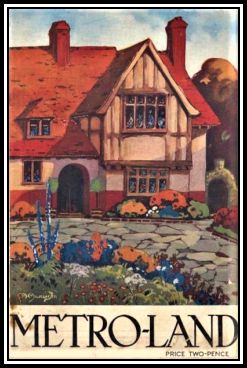 The Cover of The Metro-Land Booklet (1921 edition).
The Cover of The Metro-Land Booklet (1921 edition).
The Booklet was published annually from 1915-32 by London’s Metropolitan Railway
and promoted housing in the area served by the Railway.
After Len returned home, he discussed the possibility of buying a piece of land in Chorleywood. Judith and their families were positive in response to this. The next day, Len arranged for the morning off from work and went to the Surveyor’s Office of Rickmansworth Council in Chorleywood House. Without an appointment, Len knocked on the door of the Surveyor and inquired if Plot 52 was still available for sale. He was informed that it was and that should he be interested in its purchase after seeing it, then he needed to write him a letter within 24 hours in order to reserve it.
Within the allocated time, Len and Judith had decided that Plot 52 was where they wished to build their house. And so a letter was written, and following its delivery along with the necessary deposit, Plot 52 on Berry Lane was reserved for them. Now, all they needed was to secure a mortgage!
-oOo-
THE MORTGAGE
-oOo-
However, a major problem soon arose when Len and Judith realised that despite the pooling of their savings and salaries, they would be two hundred pounds short of the necessary deposit required that would allow them to apply for the maximum amount that their Company would allow them for a mortgage.
-oOo-
When Len returned to work, his Departmental Head asked him how his meeting with the Surveyor had gone. Len told him that he had found a piece of land and also told him of the problem that would impede them from securing the required mortgage from the Company. The Head said to allow him to see if anything could be done by Head Office in order to help them in this matter.
A few days later, Len was summoned to the office of the Executive, Mr. A.H. Edwards (or AHE, as he was affectionately known), who oversaw Len’s department, which was housed at the top management offices in Leadenhall Street. Normally only departmental heads went to these offices, and so Len was filled with a certain anxiety, as he entered this rarefied environment. AHE was a kindly man and was known to take an interest in the progress of younger members of the Company.
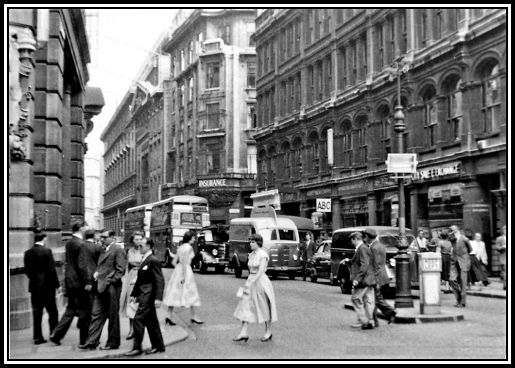 Leadenhall Street in 1955
Leadenhall Street in 1955
At their meeting, AHE asked Len to tell him about the house he and Judith proposed to build and the plot of land. In the telling, Len told him of The Empress. Although he said that he was neither a musician nor particularly practical, he did find the project to be both interesting and ambitious. Len then expected a decline for any additional help from the Company, but was surprised, (and happy), to find that AHE passed him an envelope with a small cheque inside, as he put it. AHE said that he hoped that the cheque would allow them to achieve their dream. Len says that AHE’s kind gesture not only changed his life, but also transformed his attitude to many things. AHE assured Len that he had no immediate need for the money and that it should only be repaid when he was in a position to do so.
Now all that Len and Judith had to do, together with the help of family members and friends, was to build the house and install The Empress!
-oOo-
Len says that it took him six months, thanks to his occasional earnings of ten pounds per session deputising on Monday evenings for John Bowrey at the Silver Blades Ice Rink in Streatham at the Hammond Organ, to be able to give AHE a cheque for the money loaned.
-oOo-
BUILDING THE HOUSE
-oOo-
Build a Little Home played by The Roy Fox Orchestra
This tune was used as part of the Soundtrack of
Sir John Betjeman’s (1906-1984) Television Programme, Metroland (1973)
-oOo-
Len and Judith next set about designing the house and digging the foundations. All of their spare time and weekends were now given over to the building . Len tips his hat to Judith, as she stuck with the business of getting her hands dirty and also cooking sausages on an open fire throughout a period when most would consider it to be the time of a more normal engagement.
During the early months of 1962, Len and Judith spent all of their spare time discussing and eventually drawing up the plans for their future house. In this matter, they received much help from their families and friends. Len says that the successful building of Wurlitzer Lodge gave them the necessary confidence needed to embark and bring this project to fruition.
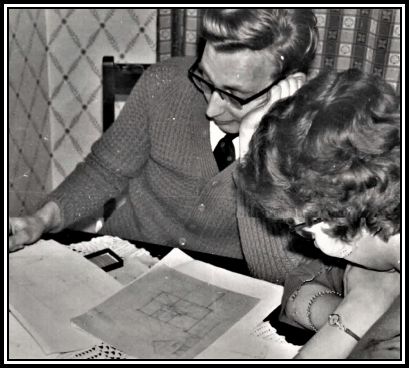 Len and Judith working on the plans for the house
Len and Judith working on the plans for the house
-oOo-
Once the time came to start laying foundations, Len, along with his father, brother Dennis and a good group of friends, set to work. Len remembers the heavy work, which often required using old equipment given to them by people who were keen to support their enthusiasm. The cement mixer shown in the photograph below was denoted by a local builder (Mr. Hunt) and was a temperamental device that was notorious for throwing out more cement mix than it actually produced!
 Len mixing cement
Len mixing cement
Len says that he urgently needed a long bath after each working day before setting off to play the Theatre Organ during the interval of the Bingo Sessions held at the Essoldo Burnt Oak or The Red Lion Inn in Edgware.
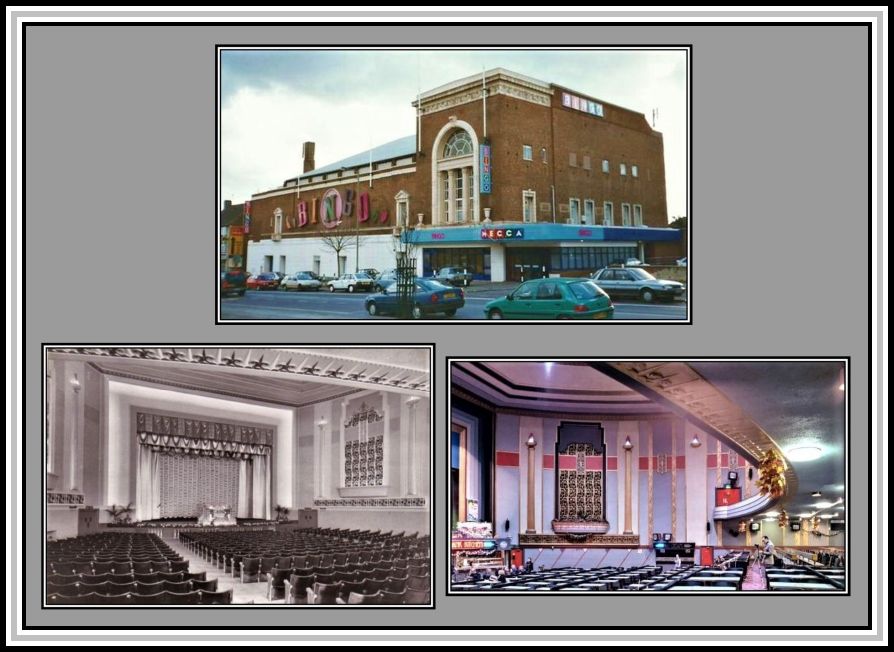 The Savoy-Essoldo Cinema-Bingo Hall Burnt Oak
The Savoy-Essoldo Cinema-Bingo Hall Burnt Oak
Top: External View of the Building as a MECCA Bingo Hall
Left: The auditorium showing the Christie Theatre Organ (2-Manuals; 7-Ranks)
which had previously been installed in the Rosevale Cinema, Partick, Glasgow
Right: The auditorium as a MECCA Bingo Hall
-oOo-
 Plot 52 during the early stages of construction
Plot 52 during the early stages of construction
The building construction continued to go ahead slowly, but steadily, thanks to help and expertise from a variety of sources. For example: one of Len’s father’s customers helped with the architectural design; another with the heating system; and yet another with help with plastering etc. Len and Judith were very grateful to these people for their input.
With any additional money Len was able to earn by playing the theatre organ at various venues, they was able to purchase the approximately 65.000 bricks used in the building. Len says that for forty pounds, they bought a lorry load of bricks, which were delivered every few weeks or so. Len remembers going to the site on weekday evenings following a delivery to arrange the bricks ready for laying at the weekend.
 Some of the ~65,000 Bricks
Some of the ~65,000 Bricks
The bricks waiting to be used here were used in the construction of the
fourteen-inch double thickness walls of the Organ Chamber
-oOo-
Over the weeks, progress continued to be made in the house construction, and soon, they were able to raise the walls and form the shell of the house.
 Building the shell of the house
Building the shell of the house
Once the shell of the house was built, Len and Judith began to turn their attention to the interior of the house.
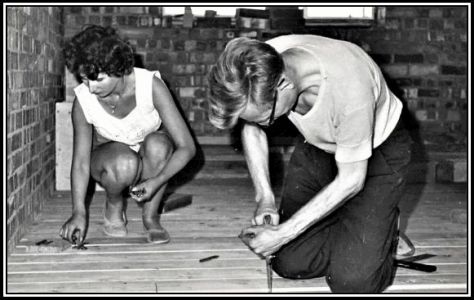 Len & Judith working on the floor
Len & Judith working on the floor
-oOo-
TONAWANDA
-oOo-
The construction work on their house was began in 1962 and completed in 1964. Len and Judith had decided to name their home Tonawanda in honour of the town where The Empress had been made by The Rudolph Wurlitzer Company of North Tonawanda.
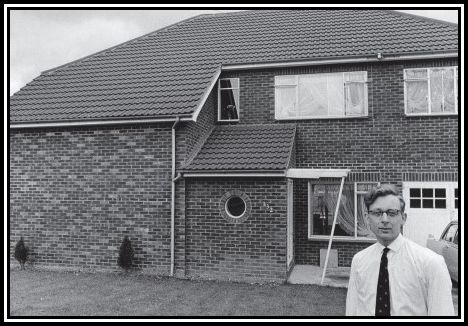 Len standing outside the newly constructed Tonawanda
Len standing outside the newly constructed Tonawanda
-oOo-
Many believe that Len fitted the house around The Empress, but this is not entirely true although the Organ Chamber was one of the first areas built in the interior in preparation for its installation. In actuality, the heavy Relay Stacks were built into the roof, as the timber-work was being erected. In addition, provision was made for the equally heavy six stage Blower Unit to be located in an out-house.
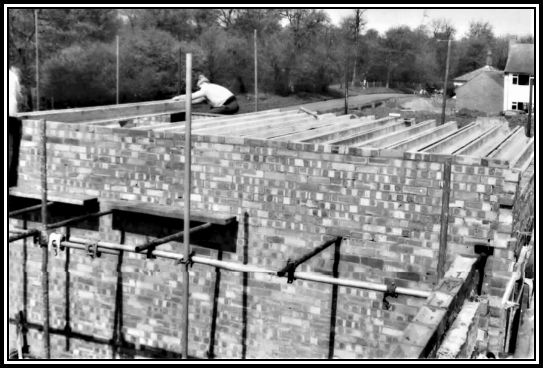 Len shown undertaking the task of sliding the precast-Truscon-U-section units
Len shown undertaking the task of sliding the precast-Truscon-U-section units
that made up the soundproof roof of the Chamber
once he had filled each section with eleven inches of concrete
The remaining components were brought from Wurlitzer Lodge in stages for refurbishment and fixing where necessary. They were eventually installed in the Organ Chamber, which had been allowed to dry-out and the walls treated with hard-plaster before any Organ construction work could begin.
-oOo-
 The Lounge of Tonawanda showing The Console of The Empress
The Lounge of Tonawanda showing The Console of The Empress
-oOo-
THE EMPRESS AT TONAWANDA
-oOo-
What follows is a series of phototgraphs and collages of The Empress at Tonawanda:
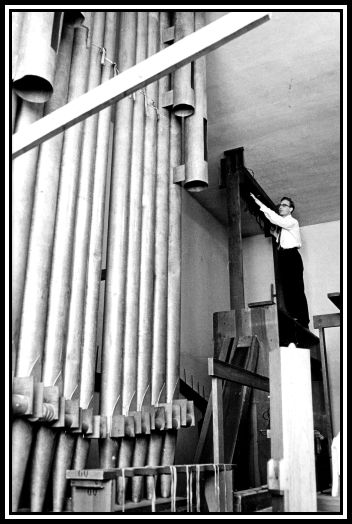 Len installing the Gamba Rank
Len installing the Gamba Rank
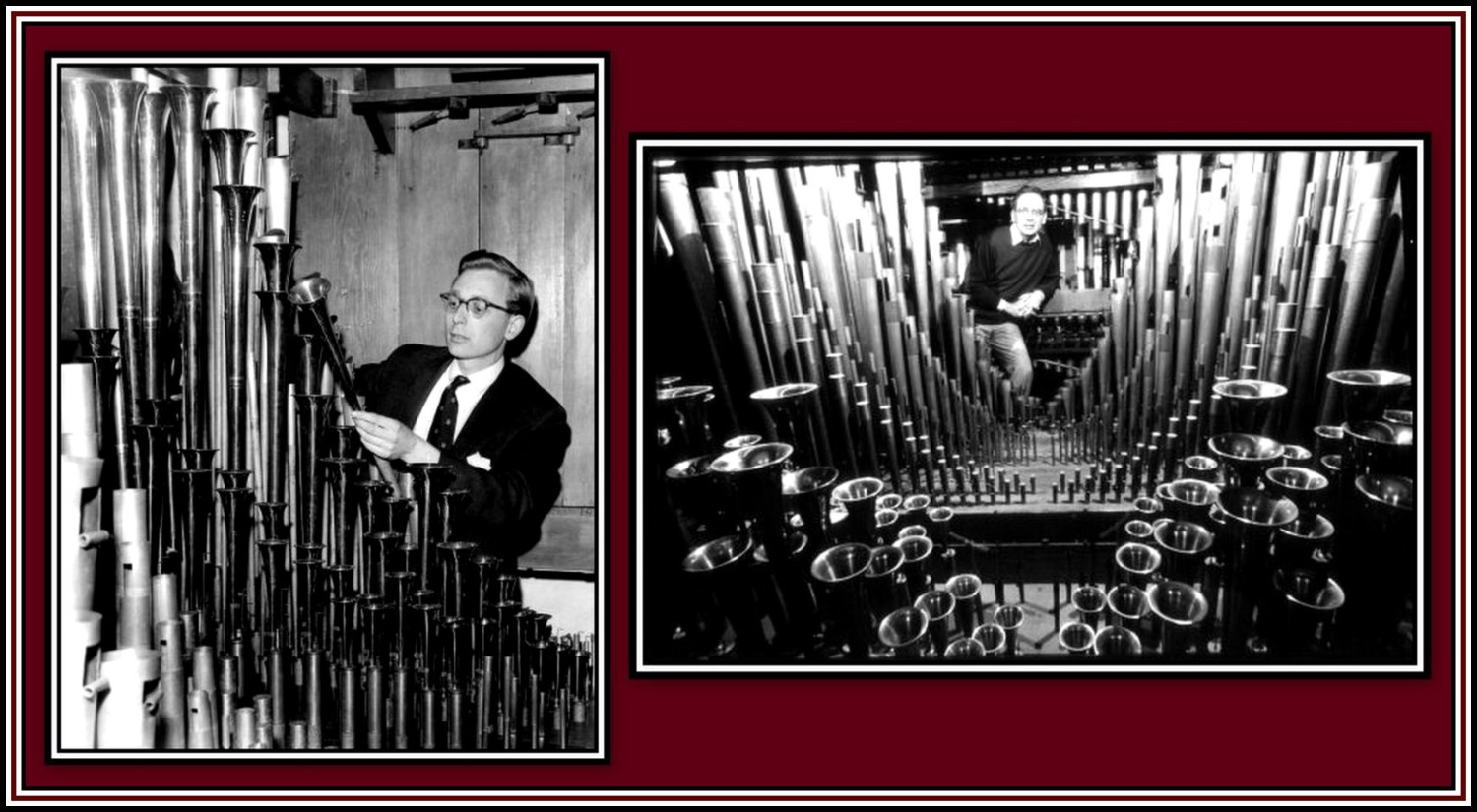 Len photographed among the Pipes
Len photographed among the Pipes
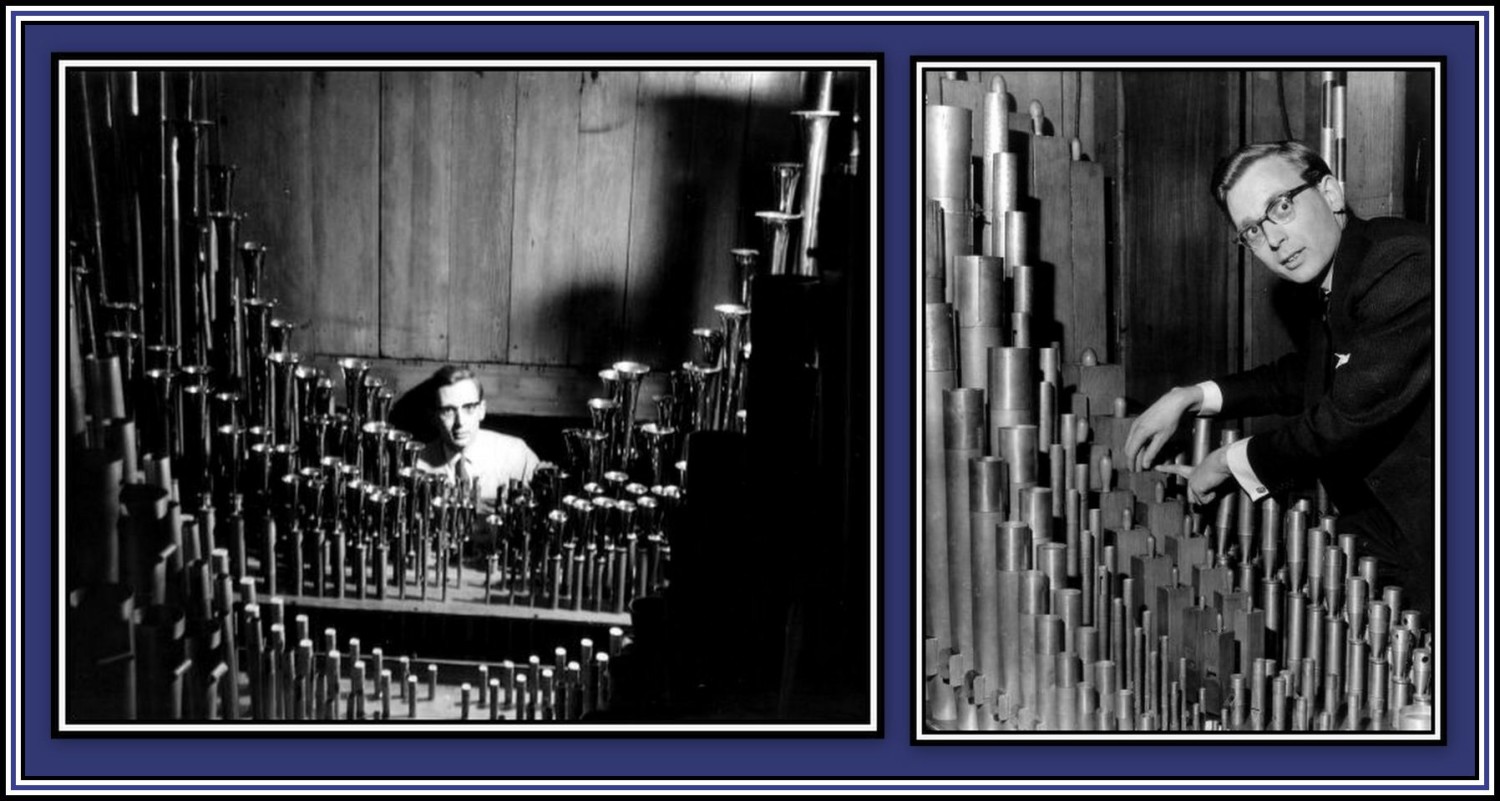 Len photographed among more of the Pipes
Len photographed among more of the Pipes
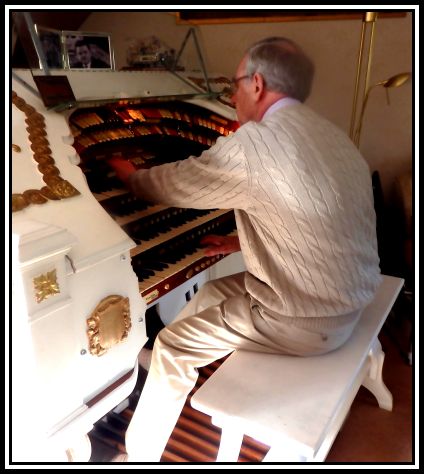 Len playing The Empress in 2014
Len playing The Empress in 2014

The Console in 2014
 The Console Manuals
The Console Manuals
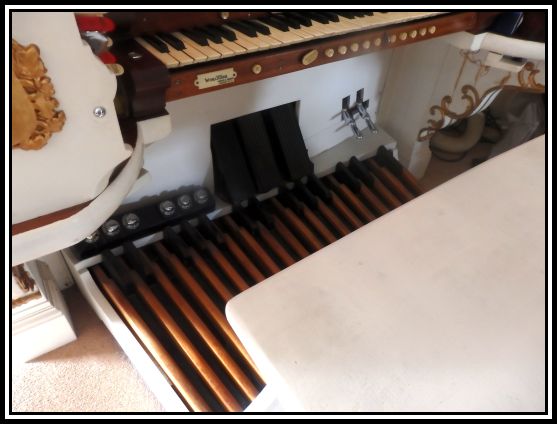 The Peddle Board & Swell Pedals of The Console
The Peddle Board & Swell Pedals of The Console
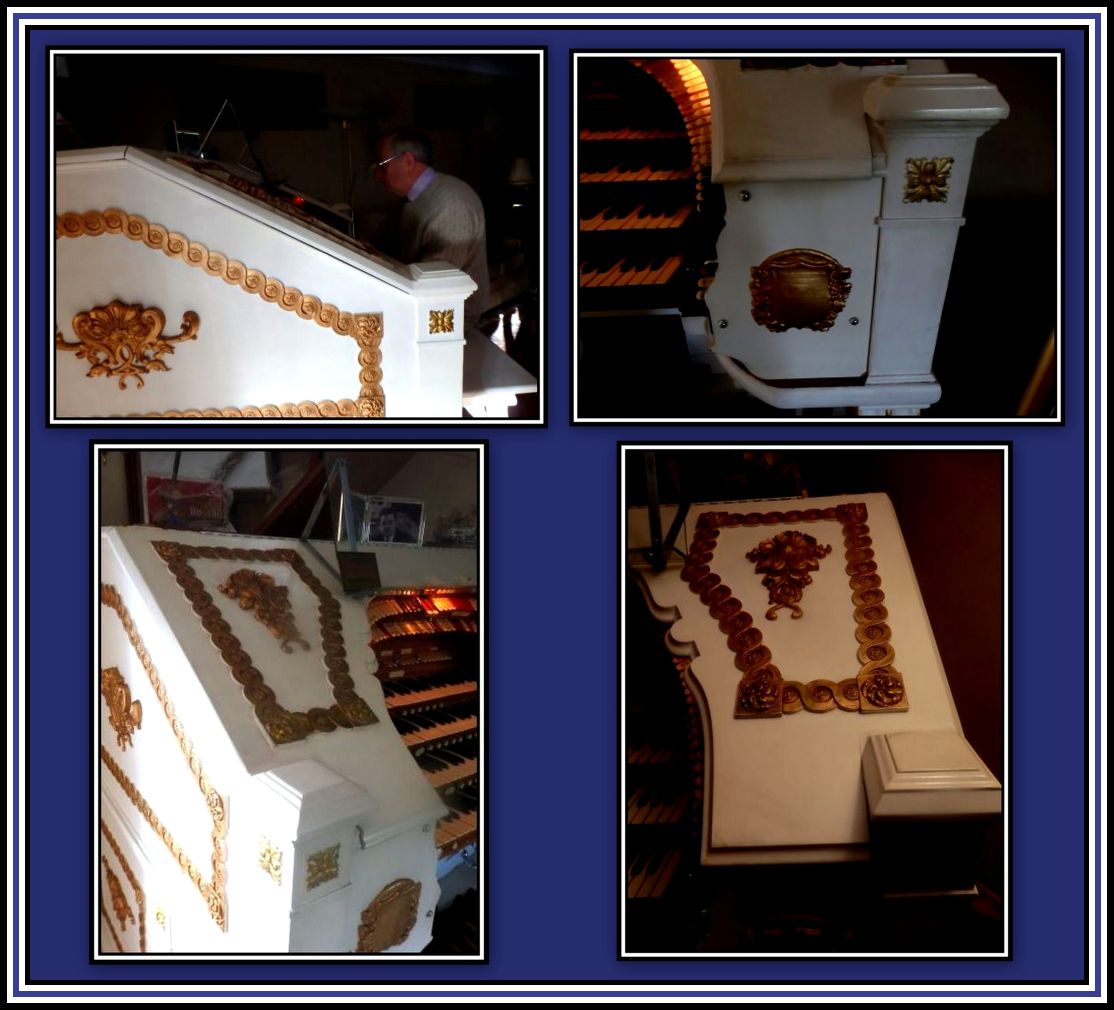 Decorative Details of The Console
Decorative Details of The Console
-oOo-
THE INAUGURAL CONCERT AT TONAWANDA
-oOo-
-oOo-
Once The Empress had been fully-refurbished and tuned, and the installation was finally complete, An Opening Concert featuring The Empress was held at Tonawanda before a specially invited group of friends.
 Len standing beside The Console of The Empress during The Concert
Len standing beside The Console of The Empress during The Concert
The Concert took place on the 30th June, 1968 and was given by Mr. Gerald Shaw (1911-1974) and Len.
Mr. Shaw was the resident organist at the Odeon Theatre Leicester Square from November 1958 until his passing in April 1974 and had named the Organ installed there, The Duchess and it was he that also named the other Organ in the Square, The Empress!
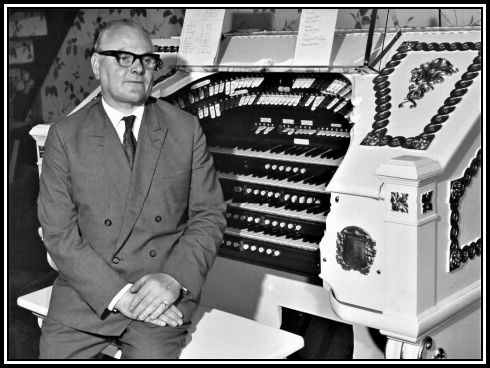 Gerald Shaw seated at the Console of The Empress during The Concert
Gerald Shaw seated at the Console of The Empress during The Concert
-oOo-
Gerald Shaw at The Duchess and playing Cockney Capers
—oooOooo—
—oooOooo—
—oooOooo—
—oooOooo—
